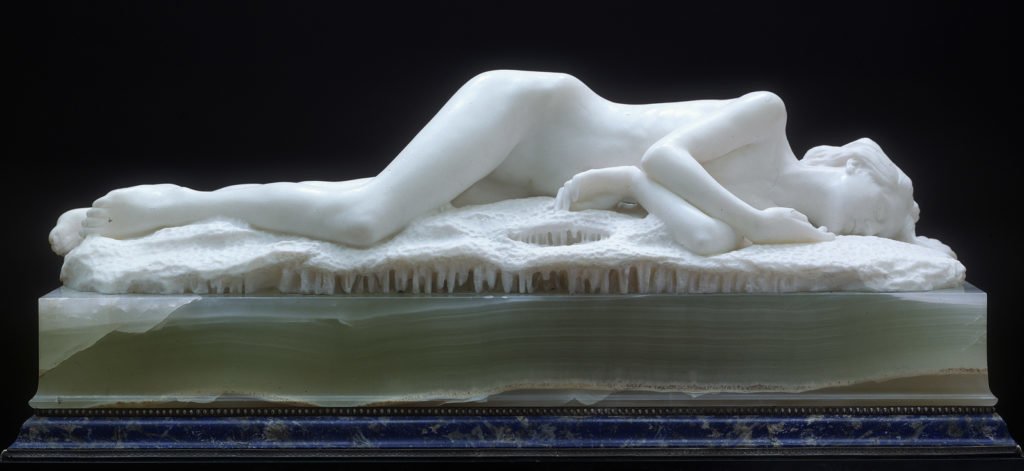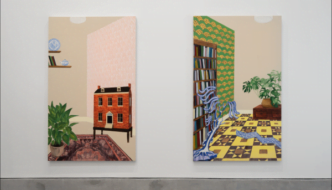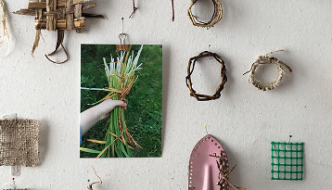Artist-curated exhibitions: Elizabeth Price at the Whitworth
August 7, 2016

Historically artists took curating exhibitions into their own hands for subversive means, to critique the institutions in which they exhibited their work and to encourage a less passive and more questioning role from the visiting public. Hans Haacke for example in his 2001 exhibition, Mixed Messages, juxtaposed items from the Victoria and Albert Museum’s collections in the context of The Serpentine Gallery. In doing this he merged two institutional sensibilities. By moving the art works out of an institution instilled with history and associations into an arguably more neutral, ‘white cube’ space he is drawing attention to the structures within the art world. He dispensed of traditional categories and labeling in his display, and rejected the conventional forms of symmetry and alignment in the hanging of the art. Haacke didn’t adhere to the normal conventions of classification and manipulated the language of museum display. This broke down the artificial boundaries imposed on objects by the institution. Haacke incited in his audience an ability to think about the work for themselves, de-stabilizing the authoritative voice of the institution and giving authority to the spectator.
In recent years there has been a flurry of artist-curated exhibitions. Grayson Perry took to the British Museum in 2011 to curate, Grayson Perry: The Tomb of the Unknown Craftsman. In this exhibition Perry’s own work was installed alongside objects, made by unknown men and women throughout history, from the British Museum’s collection.
In 2013 Jeremy Deller curated a Hayward Touring exhibition, All That Is Solid Melts Into Air. Deller took a personal look at the impact of the Industrial Revolution on British popular culture, and its persisting influence. The exhibition combined music, film and photography with a vast range of 19th century images and objects. Industrial folk music, the incessant rhythms and racket of the factory floor, and heavy metal permeated the exhibition in sound installation and film.
The latest Hayward Touring exhibition sees Elizabeth Price, who won the Turner prize in 2012, join Perry (Turner prize winner 2003) and Deller (Turner prize winner 2004) as an artist-cum-curator.
Price’s exhibition IN A DREAM YOU SAW A WAY TO SURVIVE AND YOU WERE FULL OF JOY, is currently on display at Manchester’s Whitworth Art Gallery. Price embraces an eclectic range of historical and contemporary works by over seventy artists including: Constantin Brancusi, Edward Burra, John Flaxman, Henry Fuseli, Anthea Hamilton, Richard Hamilton, Jenny Holzer, The Lumière Brothers, Giulio Paolini, Carolee Schneemann, Cosey Fanni Tutti, Andy Warhol, and Francesca Woodman. The exhibition aims to offer ‘illuminating insights into the artist’s own creative processes as well as the relationships between the works chosen’ and explores the psychological and formal power of the horizontal, in a vast repertoire of images of the reclining or recumbent body in varying states of weariness, stupor, reverie, grief, death, erotic transport and languor. The exhibition is arranged in four loosely threaded sections: Sleeping, Working, Mourning and Dancing.
Elizabeth Price makes video installations in which she links apparently unrelated things in ways that communicate visually and emotionally, just as our unconscious minds do during sleep. This appears to be the approach she has taken with the exhibition. Taking the ‘horizontal’ as her starting point she explores sleep and sleep states, moves into landscapes, then takes on memorials and sepulchral sculpture, and ends with gestures in dance.
About the exhibition, Price says: “Artists tend to approach curation in a very different way to someone that works as a curator professionally. I feel that I’ve approached the creation of the exhibition in pretty much the same way that I would do one of my artworks, in that it’s constructed narratively and is really quite immersive.”
Here Price touches on an essential point regarding artist-curated exhibitions. They are personal and subjective, the links made not to be taken as truth but to be contemplated upon as you would an individual artwork, with the artists perspective, the time and the place taken into account. Neil McGregor, director of the British Museum, describes Perry’s exhibition as a “walk round Grayson Perry’s head”. The same can be said of Price’s. By creating new links and associations between objects and artworks Perry and Price can be seen as giving them new life. However artist-curated exhibitions have also been criticized by some for there “exuberant self-advertising” (Frances Spalding); these exhibitions being great publicity for both the artists and for the institutions.
I think where Jeremy Deller was able to succeed and where Price does not was in choosing a theme and producing a formative survey on it. Next to John Martin’s epic vision of The Destruction of Sodom and Gomorrah, with its molten earth, clouds of fire and deliberate echoes of industrial change, hangs a 1979 record sleeve. It is Judas Priest’s fiery album cover Unleashed in the East. Deller’s juxtapositions make his intentions and ideas clear.
A lack of clarity in the intention of Price and her exhibition means that the exhibitions merely give the audience a glimpse into her head and allows connections and associations to be made by her, for them rather than, as Haacke did, encouraging them to make associations for themselves.
All this is not to say that I did not enjoy the exhibition or believe it to be not worth viewing. There are some beautiful and interesting artworks included and the associations Price makes between them can be thought provoking. However I think it is important to see the connections made as just one persons interpretation, and not to let the artist think for you. I enjoyed the exhibition much more when I decided to focus on each artwork individually rather than striving to understand the connections Price was making between them. These connections, for me, say much more about Elizabeth Price as an artist than they do about the artworks included in the exhibition, or its theme of sleep.
Filed under: Art & Photography
Tagged with: art, curator, Elizabeth Price, Grayson Perry, Hans Haacke, Jeremy Deller, Manchester Art Gallery, whitworth, Whitworth Art Gallery



Comments